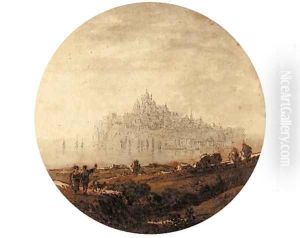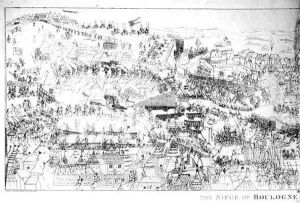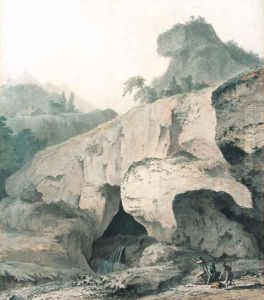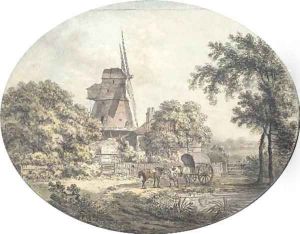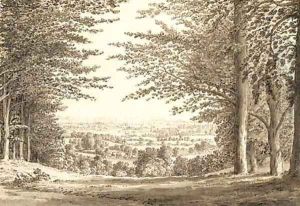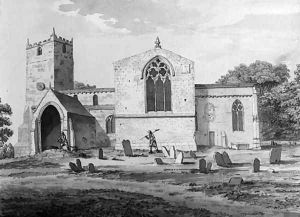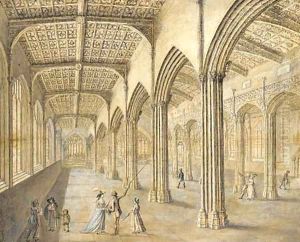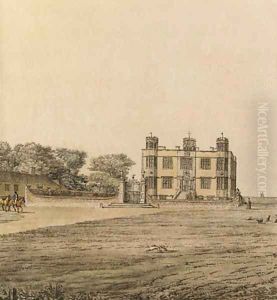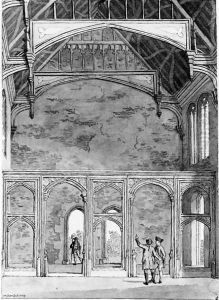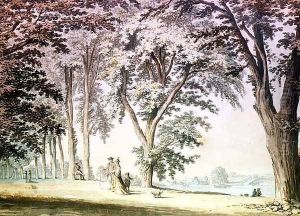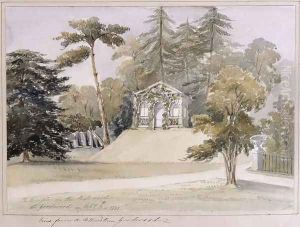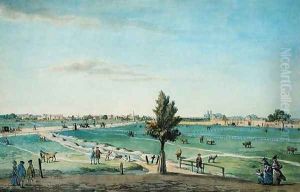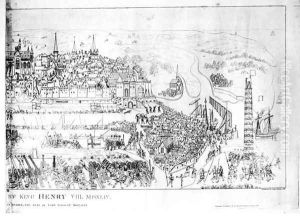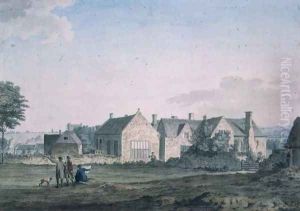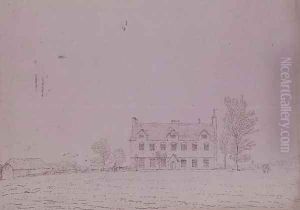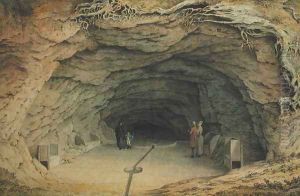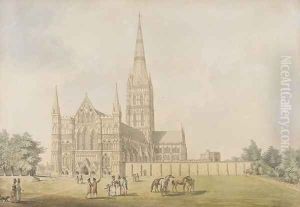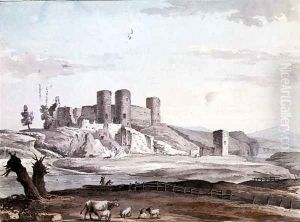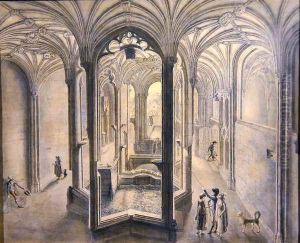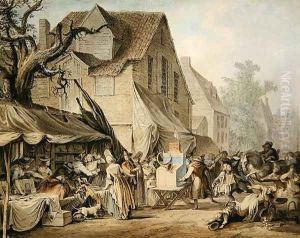Samuel Hieronymous Grimm Paintings
Samuel Hieronymus Grimm was a Swiss-born artist, known for his work as an illustrator and landscape painter, who spent much of his career in England. Born on January 18, 1733, in Burgdorf, Switzerland, Grimm showed an early interest in art and was initially trained by his father, who was a magistrate and amateur artist. He later studied drawing and watercolor in Bern before moving to Paris to further his education.
Grimm's talent was evident, and he soon made a name for himself as an illustrator. In 1768, he decided to move to England, where he would remain for the rest of his life. His arrival in England coincided with a growing interest in landscape painting and topographical illustration, which fit well with Grimm's skills and interests.
In England, Grimm traveled extensively, documenting the country's landscapes, antiquities, architecture, and events through his drawings and watercolors. He became particularly known for his 'topographical' works – detailed and accurate renderings of English and Welsh landscapes and historical buildings. His work was commissioned by private patrons and also by institutions, and he contributed to several important projects of the time.
One of Grimm's significant contributions was his work for Sir Richard Kaye, which resulted in a collection of more than 2,500 drawings and watercolors. These works, known as the 'Grimm Collection,' are now housed in the British Library and are a valuable resource for studying the historical landscape and architecture of 18th-century England.
Grimm was not just a landscape painter; he was also involved in documenting social and historical events. His works included illustrations of the trial of Warren Hastings and the Gordon Riots of 1780, providing a visual record of important events of his time.
Despite his prolific work and the quality of his paintings, Grimm did not achieve significant financial success during his lifetime. He remained relatively obscure and did not benefit from the patronage system as much as some of his contemporaries.
Samuel Hieronymus Grimm died in Tavistock Street, Covent Garden, London, on April 14, 1794. After his death, his work gained recognition for its historical value and artistic merit. Today, Grimm's art is considered an important documentation of 18th-century Britain, and his works are studied and appreciated for their detail, craftsmanship, and contribution to the historical record.
